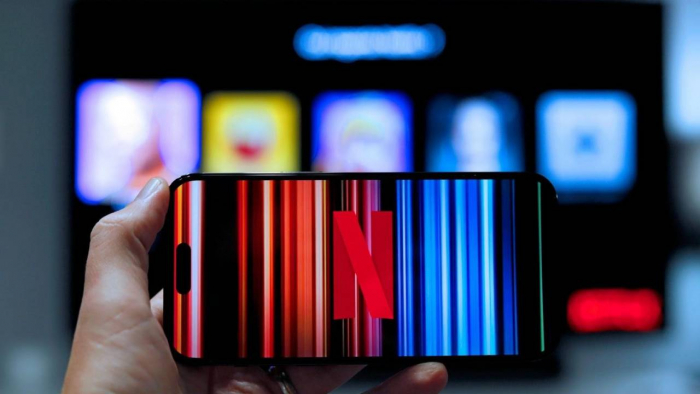How Doodsteam Became the Talk of 2025
I’ve been following Doodstream since 2023, when it was quietly reshaping how people shared videos online. What started as a fast upload-and-earn platform has now turned into one of the most controversial names in streaming.
Today, Doodstream sits at the center of global copyright battles involving Warner Bros., Netflix, Disney, and Amazon Prime Video. Its story reveals how the internet’s craving for fast, free content is colliding with an increasingly strict legal system.
Even though users remain divided about it, some see it as an innovative streaming model, while others question its legitimacy on platforms like Quora and Reddit.
Let’s take a closer look at how Doodstream’s cyberlocker system became both a success story and a legal nightmare.
The Cyberlocker Boom: Upload, Share, Earn
Doodstream built its empire on a simple idea: let anyone upload videos, share them instantly, and earn based on views. Unlike YouTube, there’s no long verification process. You upload, generate a link, and you’re ready to share.

The platform’s secret weapon is its link regeneration feature. Whenever a video link is removed, a new one can appear in seconds. For regular creators, that means your work never goes down. For copyright holders, it’s chaos.
Millions of people use it legitimately for storage and monetization, but many others use it to distribute unlicensed films, shows, and even adult material. That mix of innovation and exploitation caught the attention of regulators and lawyers worldwide.
And when regulators finally took notice, the real trouble began.
Global Attention and User Frustration
By early 2024, Doodstream wasn’t just a niche upload site anymore; it was a global phenomenon. Traffic spiked into the hundreds of millions, and users across forums like Reddit started noticing a pattern: videos randomly vanished, links broke, and the site went offline without warning.
What looked like simple downtime was actually the fallout from mounting copyright pressure. Behind the scenes, studios like Warner Bros., Netflix, and Disney were quietly tightening their grip, filing complaints and coordinating global takedowns.
A Motion Picture Association report later revealed that Doodstream had nearly 900 million visits in early 2024, making it one of the most trafficked video hosts in the world, legal or not.
For users, it felt like whiplash. One week, Doodstream worked flawlessly; the next, it disappeared behind region locks and broken mirrors. That constant back-and-forth became part of its identity, and its problem.
Which raises the question: if everyone’s trying to stop it, why is Doodstream still so hard to take down?
Why Stopping Doodstream Isn’t Easy
Even with powerful injunctions, Doodstream’s architecture makes it nearly impossible to control. Once a link is removed, automated systems regenerate new URLs within seconds. Many servers are hosted overseas, putting them beyond India’s legal reach.
Doodstream argues that it complies with U.S. DMCA laws, but Indian courts clarified that being DMCA-compliant doesn’t shield it under local law. The Delhi HC’s 2024 judgment explicitly rejected this defense, calling the site a “rogue cyberlocker.”
Even AI-powered content detection systems can’t keep up. When you have millions of uploads a week, every takedown feels like trying to plug holes in a sinking ship.
And while courts struggled with enforcement, the streaming industry began to feel the ripple effects.
Streaming Industry Fallout: When Traffic Tells the Truth
The numbers tell the story. SimilarWeb data shows that even after repeated bans, Doodstream continues to attract millions of monthly visitors.
It’s proof that users still crave free, fast, and flexible viewing options. Traditional OTT platforms like Netflix and Prime Video might win on quality, but not everyone wants to pay or wait for regional releases.
For studios, this is a wake-up call. Anti-piracy costs are soaring, and platforms are experimenting with AI watermarking and dynamic blocking tools. Yet each enforcement action spawns new clones.
The pressure on independent creators, however, might be even more significant.
Creators Caught in the Middle
For independent creators, Doodstream was once a dream: instant uploads, quick views, and pay-per-view income. But in 2025, that dream had started to feel unstable.
When the main domain gets blocked, creators lose their links, traffic, and hard-earned revenue. Some users on Trustpilot have even reported delayed or missing payments, adding to the uncertainty. On top of that, the platform’s piracy reputation has made advertisers and brand partners more cautious than ever.
If you’re focused on long-term growth and income stability, it’s safer to switch to proven platforms like YouTube Partner Program, Vimeo OTT, or Rumble Pro. They may not pay as much per view, but they offer security, visibility, and peace of mind that Doodstream can no longer guarantee.
To really understand how the case evolved, it helps to look at the key court milestones that shaped this saga.
The Key Legal Milestones
| Date | Order / Decision | Impact |
| March 2024 | Delhi High Court orders Doodstream to remove infringing links | Sets the first dynamic injunction |
| May 2024 | Dynamic+ injunction issued | Extends to mirror and redirect sites |
| June 2024 | Operators banned from running the platform | Establishes individual accountability |
| April 2025 | Interim injunction reaffirmed | Confirms ongoing non-compliance |
These decisions now guide how Indian law interprets intermediary liability, where even platforms that don’t directly upload content can be held responsible for what users share.
And with that legal foundation set, the next question becomes: how does it impact users and the broader ecosystem?
What It Means for Viewers and Platforms
If you’ve tried to stream on Doodstream recently, you’ve probably noticed the inconsistency. One day it works, the next day the site’s gone. VPNs can help, but usability has become unreliable.
For platforms, this case is a clear signal. The age of “host now, moderate later” is ending. Future video-sharing platforms will need to design systems that prevent misuse from the start, not patch it after lawsuits.
Which brings us to the real question many users still ask, should anyone rely on Doodstream now?
Would I Still Use Doodstream?
If you’d asked me two years ago, I might have said yes. It was fast, rewarding, and creator-friendly. But now, with ongoing legal pressure and unpredictable downtime, I wouldn’t trust it for long-term hosting.
Even if your content is 100% original, the risk of losing links or payments overnight is too high. The better move is to focus on platforms that balance monetization and stability.
Still, Doodstream deserves credit for exposing a truth the internet has long avoided: people want creator-driven platforms that are open, fast, and fair. Whoever manages to build that legally will define the next era of streaming.
So what can we learn from this, and where does the industry go from here?
Final Takeaway
Watching Doodstream evolve feels like watching the internet mature in real time. It started as a bold experiment in file hosting and became a cautionary tale about what happens when innovation outpaces regulation.
As creators, we all want platforms that let us reach audiences without risking our work or reputation. Doodstream proved that speed and freedom matter, but so does accountability.
If 2025 has taught us anything, it’s that the future of streaming belongs to platforms that get both right, freedom for creators, and fairness for rights holders.
FAQ
1. What is Doodstream?
A file-hosting and video-sharing site known for its upload-and-earn model, often linked to copyright disputes.
2. Is Doodstream legal in India?
No. Indian courts banned its main and mirror domains in 2024–2025 for repeated copyright violations.
3. Can I use Doodstream safely?
Only for uploading your own or licensed content. Sharing pirated material is illegal.
4. Why is Doodstream hard to block?
It uses auto-generated links and foreign servers, making enforcement difficult.
5. What are the best Doodstream alternatives?
YouTube Partner Program, Vimeo OTT, Rumble Pro, and PeerTube, all compliant and reliable.
Post Comment
Be the first to post comment!





